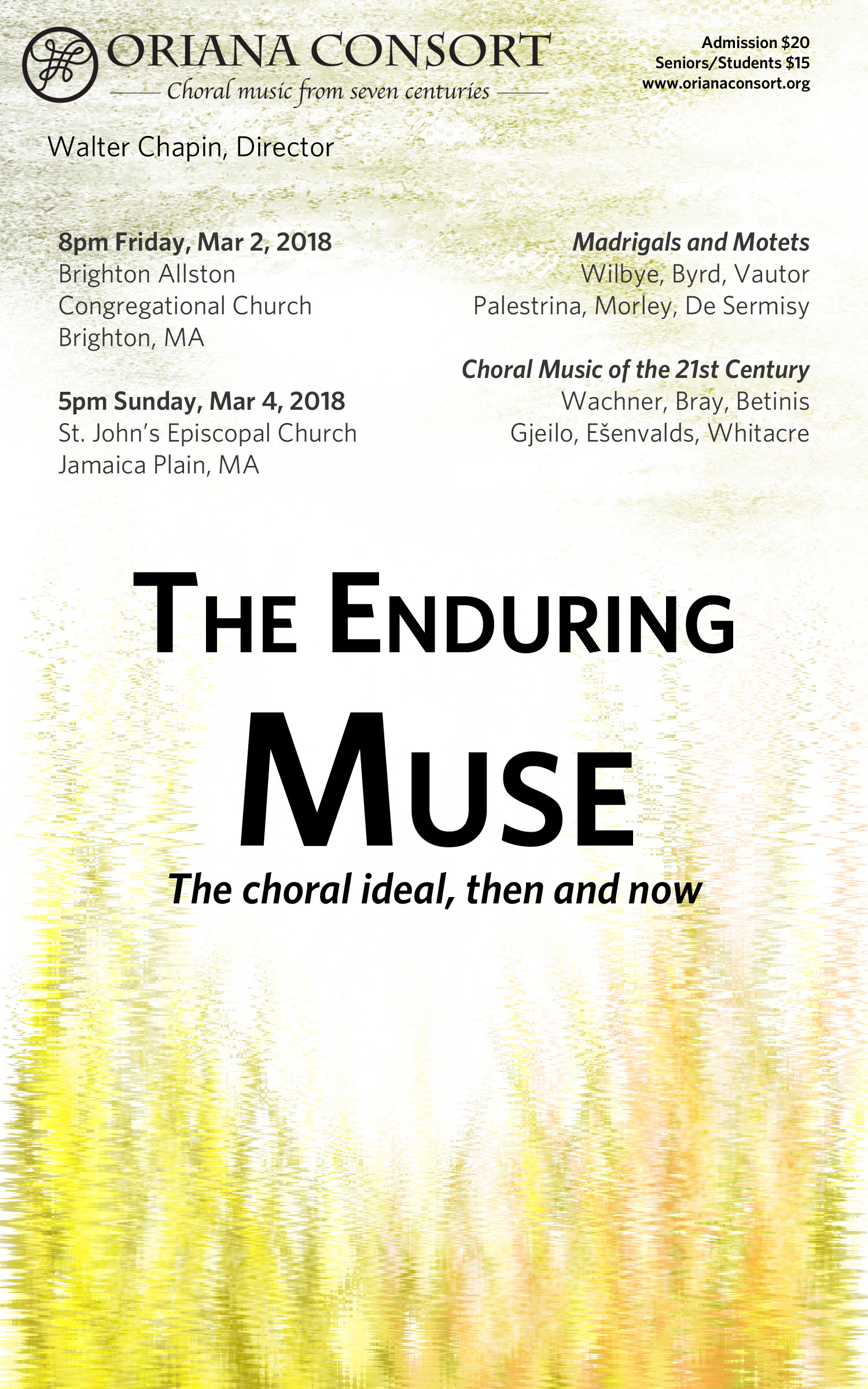March 2018
The Enduring Muse: The choral ideal, then and now
Schedule
5 pm Sunday, Mar. 4, 2018 |
RESCHEDULED! |
Program
Read director Walter Chapin's program notes!
Styles of choral composition differ widely beween the turn of the seventeenth century and the turn of the twenty-first — yet what these two eras share is that each witnessed a new flowering of composers of genius and a profusion of new choral music that arose from their common muse. We can find similarities between choral music of the first era and that of the second: for, in this program, a choral work by a composer of the first era is paired with a strikingly similar choral work by a composer of the second — John Wilbye with Julian Wachner, William Byrd with Charlotte Bray, Thomas Vautor with Abbie Betinis, G. P. da Palestrina with Ola Gjeilo, Thomas Morley with Ēriks Ešenvalds, and Claudin de Sermisy with Eric Whitacre.
John Wilbye (1574-1638) Flora gave me fairest flowers
Julian Wachner (1969-) Sometimes I feel alive. somewhere i have never travelled
Giovanni Pierluigi da Palestrina (1525?-1594) Pulchra es, amica mea
Ola Gjeilo (1978-) Northern Lights
Thomas Vautor Songs of divers ayres and natures. Sweet Suffolke owle
Abbie Betinis (1980-) Songs of Smaller Creatures. 1. the bees’ song; 2. a noiseless, patient spider
William Byrd (~1539-1623) Mass for 5 voices. Agnus Dei
Charlotte Bray (1982-) Agnus Dei
Thomas Morley (1557-1603?) O sleep, fond fancy
Ēriks Ešenvalds (1977-) Only in Sleep
Claudin de Sermisy (~1490-1562) Aspice, Domine
Eric Whitacre (1970-) Sainte-Chapelle
